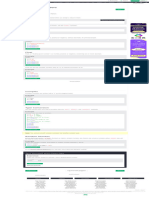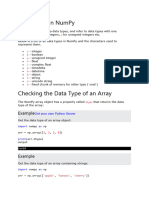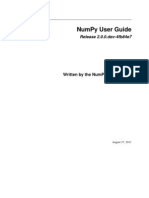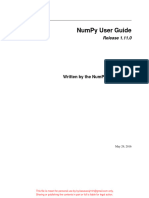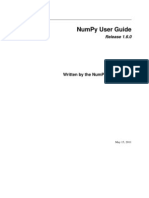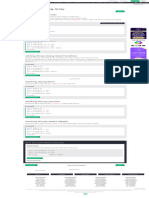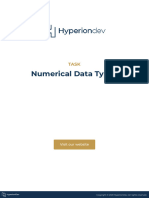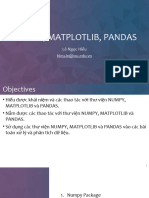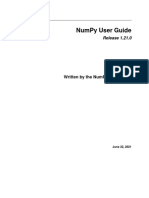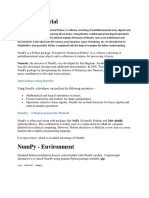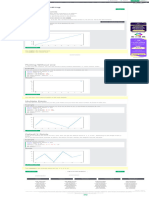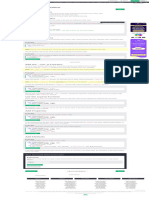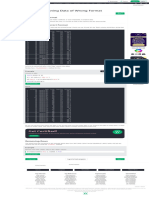Tutorials Exercises Get Certified Services Bootcamps Spaces Sign Up Log in
Dark mode
Dark code
HTML CSS JAVASCRIPT SQL PYTHON JAVA PHP BOOTSTRAP HOW TO W3.CSS C C++ C# REACT R JQUERY DJANGO
NumPy Tutorial ADVERTISEMENT
NumPy HOME
NumPy Intro
NumPy Getting Started
NumPy Data Types
NumPy Creating Arrays
NumPy Array Indexing
NumPy Array Slicing
NumPy Data Types ❮ Previous Next ❯
NumPy Copy vs View
NumPy Array Shape
NumPy Array Reshape
NumPy Array Iterating
Data Types in Python
NumPy Array Join
By default Python have these data types:
NumPy Array Split
NumPy Array Search strings - used to represent text data, the text is given under quote marks. e.g. "ABCD"
NumPy Array Sort integer - used to represent integer numbers. e.g. -1, -2, -3
NumPy Array Filter float - used to represent real numbers. e.g. 1.2, 42.42
boolean - used to represent True or False.
NumPy Random complex - used to represent complex numbers. e.g. 1.0 + 2.0j, 1.5 + 2.5j
Random Intro
Data Distribution
Random Permutation Data Types in NumPy
Seaborn Module
NumPy has some extra data types, and refer to data types with one character, like i for integers, u for unsigned integers etc.
Normal Distribution
Binomial Distribution Below is a list of all data types in NumPy and the characters used to represent them.
i - integer
b - boolean
u - unsigned integer
f - float
c - complex float
m - timedelta
M - datetime
O - object
S - string
U - unicode string
V - fixed chunk of memory for other type ( void )
COLOR PICKER
Checking the Data Type of an Array
The NumPy array object has a property called dtype that returns the data type of the array:
Example Get your own Python Server
Get the data type of an array object:
import numpy as np
arr = np.array([1, 2, 3, 4])
print(arr.dtype)
Try it Yourself »
Example
Get the data type of an array containing strings:
import numpy as np
arr = np.array(['apple', 'banana', 'cherry'])
print(arr.dtype)
Try it Yourself »
ADVERTISEMENT
ADVERTISEMENT
Creating Arrays With a Defined Data Type
We use the array() function to create arrays, this function can take an optional argument: dtype that allows us to define the
expected data type of the array elements:
Example
Create an array with data type string:
import numpy as np
arr = np.array([1, 2, 3, 4], dtype='S')
print(arr)
print(arr.dtype)
Try it Yourself »
For i , u , f , S and U we can define size as well.
Example
Create an array with data type 4 bytes integer:
import numpy as np
arr = np.array([1, 2, 3, 4], dtype='i4')
print(arr)
print(arr.dtype)
Try it Yourself »
What if a Value Can Not Be Converted?
If a type is given in which elements can't be casted then NumPy will raise a ValueError.
ValueError: In Python ValueError is raised when the type of passed argument to a function is unexpected/incorrect.
Example
A non integer string like 'a' can not be converted to integer (will raise an error):
import numpy as np
arr = np.array(['a', '2', '3'], dtype='i')
Try it Yourself »
Converting Data Type on Existing Arrays
The best way to change the data type of an existing array, is to make a copy of the array with the astype() method.
The astype() function creates a copy of the array, and allows you to specify the data type as a parameter.
The data type can be specified using a string, like 'f' for float, 'i' for integer etc. or you can use the data type directly like
float for float and int for integer.
Example
Change data type from float to integer by using 'i' as parameter value:
import numpy as np
arr = np.array([1.1, 2.1, 3.1])
newarr = arr.astype('i')
print(newarr)
print(newarr.dtype)
Try it Yourself »
Example
Change data type from float to integer by using int as parameter value:
import numpy as np
arr = np.array([1.1, 2.1, 3.1])
newarr = arr.astype(int)
print(newarr)
print(newarr.dtype)
Try it Yourself »
Example
Change data type from integer to boolean:
import numpy as np
arr = np.array([1, 0, 3])
newarr = arr.astype(bool)
print(newarr)
print(newarr.dtype)
Try it Yourself »
Test Yourself With Exercises
Exercise:
NumPy uses a character to represent each of the following data types, which one?
i = integer
= boolean
= unsigned integer
= float
= complex float
= timedelta
= datetime
= object
= string
Submit Answer »
Start the Exercise
❮ Previous Log in to track progress Next ❯
ADVERTISEMENT
ADVERTISEMENT
Spaces Upgrade Newsletter Get Certified Report Error
Top Tutorials Top References Top Examples Get Certified
HTML Tutorial HTML Reference HTML Examples HTML Certificate
CSS Tutorial CSS Reference CSS Examples CSS Certificate
JavaScript Tutorial JavaScript Reference JavaScript Examples JavaScript Certificate
How To Tutorial SQL Reference How To Examples Front End Certificate
SQL Tutorial Python Reference SQL Examples SQL Certificate
Python Tutorial W3.CSS Reference Python Examples Python Certificate
W3.CSS Tutorial Bootstrap Reference W3.CSS Examples PHP Certificate
Bootstrap Tutorial PHP Reference Bootstrap Examples jQuery Certificate
PHP Tutorial HTML Colors PHP Examples Java Certificate
Java Tutorial Java Reference Java Examples C++ Certificate
C++ Tutorial Angular Reference XML Examples C# Certificate
jQuery Tutorial jQuery Reference jQuery Examples XML Certificate
FORUM | ABOUT
W3Schools is optimized for learning and training. Examples might be simplified to improve reading and learning. Tutorials, references, and examples are constantly reviewed to avoid errors, but we
cannot warrant full correctness of all content. While using W3Schools, you agree to have read and accepted our terms of use, cookie and privacy policy.
Copyright 1999-2023 by Refsnes Data. All Rights Reserved.
W3Schools is Powered by W3.CSS.




